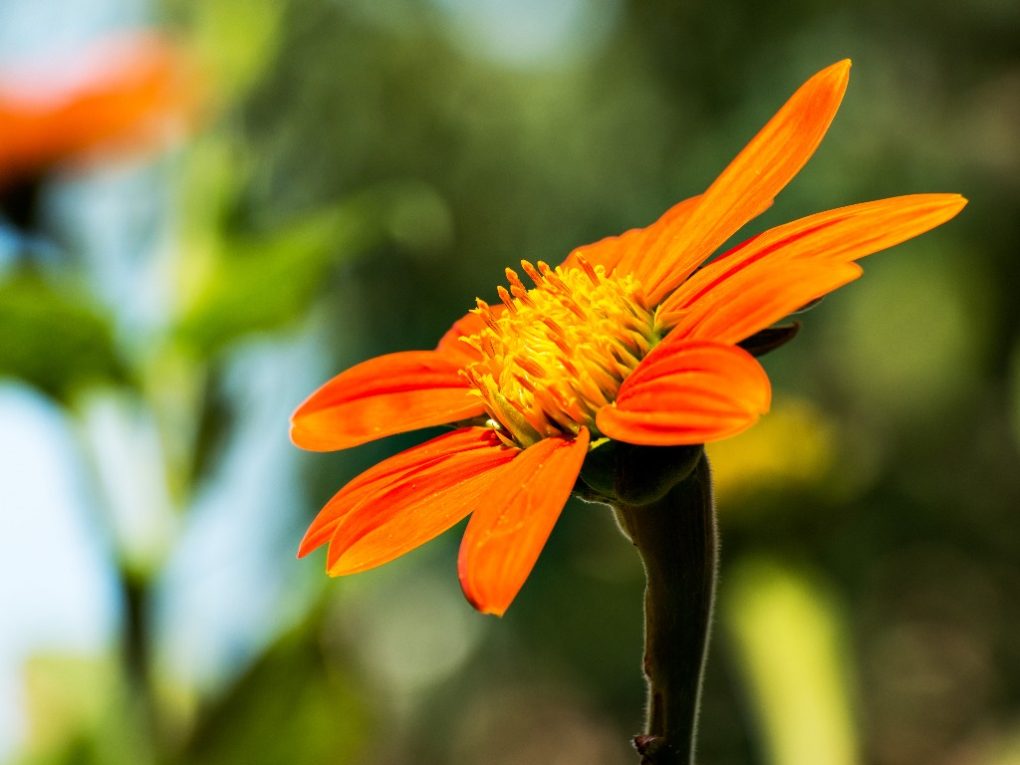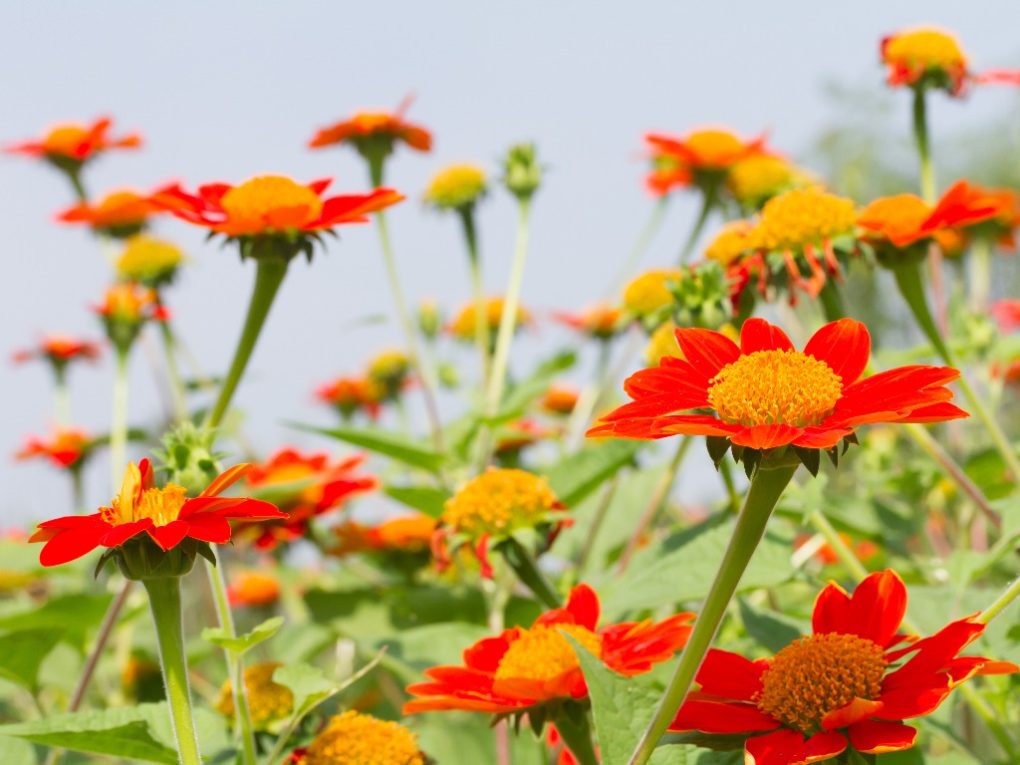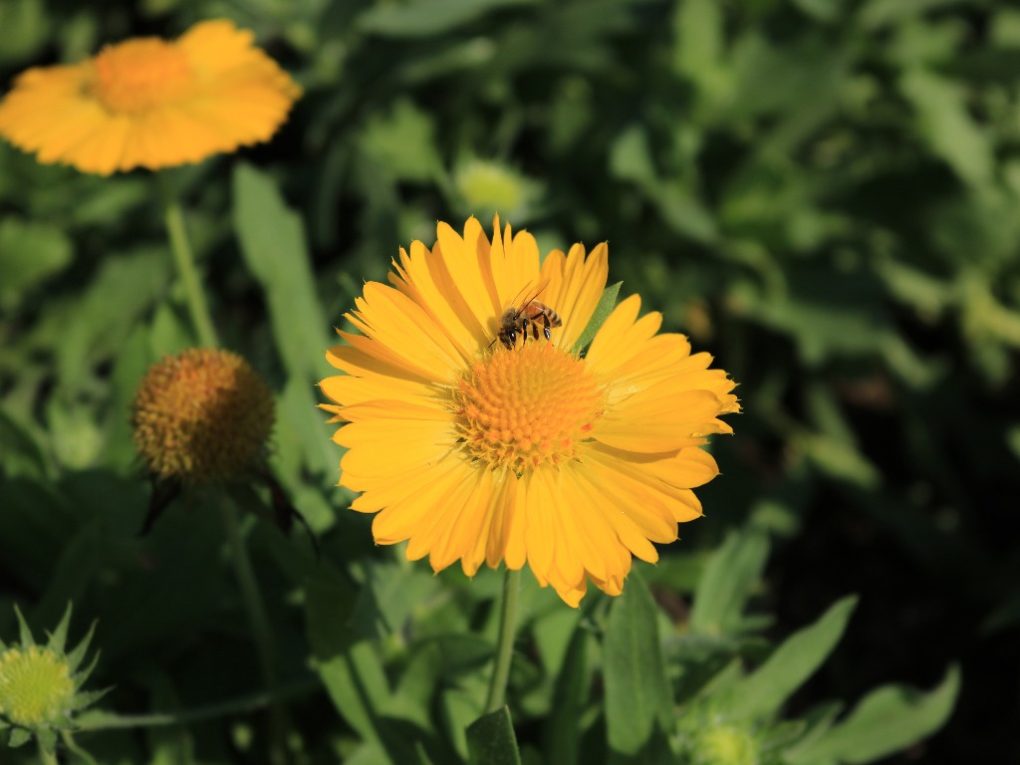Mexican Sunflower Perennial: What You Need to Know About Mexican Sunflower Perennial
Mexican Sunflowers, known as Tithonia rotundifolia according to Wisconsin Horticulture, are generally grown annually in most regions but are technically perennial plants. In warmer climates where the temperature does not drop below freezing, they may be grown as perennials, returning year after year. Mexican Sunflowers are native to Central America and Mexico.

Table of Contents
Characteristics of a Mexican Sunflower Perennial
Height
Mexican Sunflowers can grow quite tall, ranging from 3 to 6 feet tall. However, under ideal growing conditions, they may grow even taller. The height of the plant can also vary depending on the cultivar and the growing environment.
Flower
Mexican Sunflowers produce large, showy, daisy-like flowers, typically 3 to 4 inches in diameter. The flowers can range in color from bright orange to yellow and are often mistaken for actual sunflowers due to their similar appearance.
Mexican Sunflower flowers have a dark center of numerous small florets surrounded by bright petals. These flowers bloom in the summer and fall and can attract pollinators, including bees, butterflies, and hummingbirds.
Leaves
Mexican Sunflower leaves are large and rough-textured, with a coarse texture and a dark green color. The leaves are typically 6 to 10 inches long and 4 to 6 inches wide and have a triangular or heart-shaped base. The margins of the leaves are usually serrated or toothed.
The leaves are arranged alternately along the stem and have short petioles. The surface of the leaves is covered with small hairs, which gives them a slightly rough feel. Overall, the leaves of the Mexican Sunflower are quite attractive and can add a nice contrast and texture to any garden.
Growth Habit
Mexican Sunflowers have a bushy growth habit and can spread out to cover a wide area. They typically grow to 3 to 6 feet and can spread to 3 to 4 feet. The plant has a single central stem that branches into several smaller stems. The stems are sturdy and have a slightly woody texture as the plant matures.
Mexican Sunflowers are fast-growing plants and can reach their full height within a few months of planting. They are also relatively easy to care for and thrive in soil and light conditions.

Hardiness
Mexican Sunflowers are native to Mexico and Central America and are typically grown annually in most regions. They are not considered cold and hardy and cannot tolerate freezing temperatures.
However, in warm climates with mild winters, Mexican Sunflowers can come back year after year and behave like perennials if they are not killed by frost. They can also self-seed and return as volunteers in the following growing season. Mexican Sunflowers prefer warm temperatures and full sun and can be grown in USDA hardiness zones 9 through 11.
Soil and Water Requirements
Mexican Sunflowers prefer well-draining soil that is rich in organic matter. They can tolerate different soil types, including sandy, loamy, and clay soils, as long as the soil is well-draining. The soil pH must be neutral to slightly acidic, between 6.0 and 7.0.
Mexican Sunflowers also require regular watering, especially during periods of drought. The soil must be moist, as the plant can be susceptible to root rot. Therefore, it is best to water the plant deep and infrequently rather than lightly and frequently.
Propagation
Mexican Sunflowers can be propagated from seed, which must be planted in the spring after the last frost. The seeds can be started indoors in late winter or early spring, or they can be sown directly into the garden soil after the danger of frost has passed. To start the seeds indoors, sow them in individual containers filled with a high-quality potting mix, and keep the soil moist and warm. The seeds should germinate within 7 to 14 days.
To sow the seeds directly into the garden soil:
- Prepare the soil by removing weeds and adding compost or other organic matter.
- Sow the seeds about 1/4 inch deep and 6 inches apart, and cover them lightly with soil.
- Water the seeds well and keep the soil moist until the seeds germinate.
Attracts Pollinators
Mexican Sunflowers are known for attracting many pollinators, including bees, butterflies, and hummingbirds. The plant produces large, showy flowers rich in nectar and pollen, making them a popular food source for these pollinators.

Butterflies, in particular, are attracted to the bright orange or yellow flowers of the Mexican Sunflower. The flowers are also known to attract several species of bees, including honeybees and bumblebees. Hummingbirds are also attracted to the flowers of Mexican Sunflowers, as they are rich in nectar and provide a good energy source for these high-energy birds.
Tips When Taking Care of Mexican Sunflower
- Water regularly: Mexican Sunflowers require regular watering to keep the soil moist. Water the plant deeply and infrequently rather than water it lightly and frequently.
- Fertilize occasionally: Mexican Sunflowers benefit from occasional fertilization. Use a balanced, all-purpose fertilizer every 4 to 6 weeks during the growing season.
- Deadhead spent blooms: Remove spent flowers regularly to encourage the plant to produce more flowers.
- Provide support: Mexican Sunflowers can grow quite tall and may require support to prevent the stems from bending or breaking. Use stakes or a trellis to provide support.
- Watch for pests: Mexican Sunflowers can be susceptible to aphids, spider mites, and whiteflies. Watch for signs of infestation, such as deformed leaves or sticky residue on the leaves, and treat them with insecticidal soap or neem oil.
- Prune regularly: Prune the plant regularly to encourage bushy growth and remove dead or damaged stems or leaves.
- Mulch around the base: Mulching around the plant’s base can help retain soil moisture and suppress weed growth.
